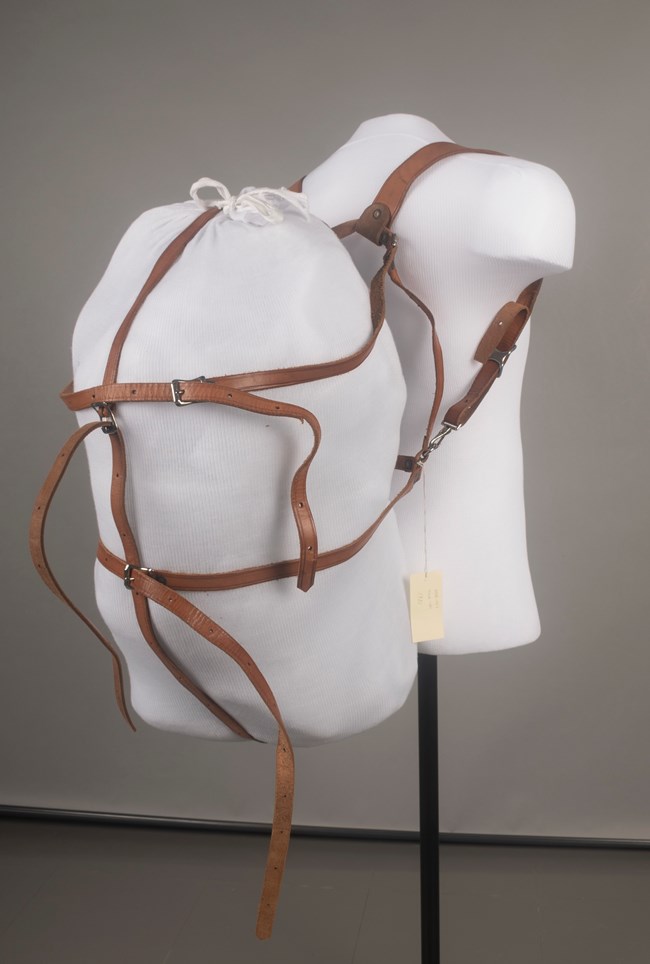Last updated: November 17, 2022
Article
50 Nifty Finds #3: Unpacking-a-Surprise
Sometimes the information that comes with an object donated to a museum is incorrect. This often happens when family members inherit objects, or the objects changed hands many times. If taken at face value, the misinformation can mean that you don’t have what you think you do.
The National Park Service (NPS) History Collection staff recently found that a bridle in the collection turned out to be something else entirely. Its picture is below. What does it look like to you?

The object is part of a donation from Charles E. Peterson’s family, which also includes his NPS uniform. Peterson (1906–2004) began working for the NPS in 1929 when the uniform included breeches and riding boots, and some employees still used horses to get around in parks. It’s not surprising that it was thought to be a bridle, even though it didn’t have a bit.

Peterson, known as “Pete” to his friends, was an architect by training. In 1933 he started the Historic American Building Survey (HABS) to document America’s architectural heritage. He is known as a founder of the American historic preservation movement. During his 33-year NPS career, Peterson worked as an architectural historian, landscape architect, preservationist, and planner for projects at Colonial Parkway, Independence National Historical Park, Shenandoah and Great Smoky Mountains national parks, and other national parks.
Fast forward to 2021, and Peterson’s “bridle” needed a bit of preservation work. During use, Peterson probably treated the straps with leather dressings to keep them soft and flexible. Over time, the oils in the dressings can create bright green corrosion on the copper alloy rivets. Removing it is usually straightforward, and we asked our coworkers at Harpers Ferry Center’s Museum Conservation Services to treat it.
Looking at it before treatment, it became clear that either it wasn’t a bridle or else Peterson rode a very strange horse! One clue gave it away—sweat stains on the wider straps (who says museum work isn’t glamorous?). More research proved that it was a pack harness used by Peterson rather than something worn by his horse.
A pack harness is similar to horse tack, with the same kind of leather straps, rivets, and buckles (so we shouldn’t be too hard on whoever cataloged it as a bridle). In fact, The Boy Scouts Year Book (1920) suggests making pack harnesses with copper rivets and leather straps bought from a saddle or harness maker.

Some pack harnesses use baskets or other rigid packs to carry items. The style of Peterson’s pack harness allows larger loads to be carried: simply roll everything up in a blanket or tarp and strap it into the harness. The downside is that it had to be completely unpacked to access a single item—a feature that makes you appreciate the many pockets of modern backpacks.
Sources:
Fredrick K. Vreeland, “Camping the Buckskin Way,” in The Boy Scouts Year Book, ed. Franklin K. Mathews (New York: D. Appleton and Company, 1920).Willis O. C. Ellis, “Notes on the Pack Sack, Rucksack, Etc.,” Hunter-Trader-Trapper, October 1920.
Library of Congress, “Historic American Building Survey/Historic American Engineering Record/Historic American Landscapes Survey.” https://www.loc.gov/pictures/collection/hh/
